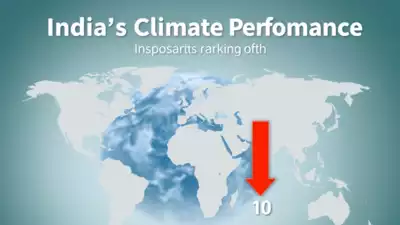EXPLAINER | Why census worries are legitimate

Without a census, we are left unaware of the population figures crucial for delivering services and evaluating the effects – positive or negative – of various interventions on the community’s welfare.Lack of census data prevents us from accurately determining population sizes, which is crucial for delivering services and evaluating the impact of various interventions on people’s welfare.
Written by Mishra from the United States, this text is presented to you.
Despite concerns surrounding the potential inclusion of a caste census and the shift towards digital methods, India finds itself unable to postpone the long-awaited 2021 Census any longer. As a result, it seems that the census will finally commence in 2025.
Essential for policy formulation is the census.
The recent apprehension primarily stems from the prolonged postponement of the census in India and the resultant ambiguity. Conducted every ten years, the Indian census goes beyond a simple population count, encompassing a comprehensive review of various demographic aspects essential for comprehending the shifting population trends over time and for future planning. While the initial delay was attributed to the pandemic, now that other data collection activities have resumed smoothly, there seems to be no valid reason for further prolonging the census suspension.
The importance of the census and its impact on shaping lives and livelihoods has been a recurring topic with little impact. Concerns have been raised about relying on various administrative statistics, vital registration data, and a plethora of digital information (referred to as Big Data) as a substitute for the census. However, there is no viable alternative to the census due to its ability to provide comparability with historical data and the adaptability to jurisdictional and definitional changes every decade. Its thorough enumeration process, regular periodicity, and detailed information make it an unparalleled and indispensable resource, often heralded as the primary database for human population statistics in India.
The Methodology and Distinctiveness of the Exercise
This exercise’s preparation includes establishing limits for census towns and urban agglomerations before conducting household listing, carrying out a thorough enumeration, and conducting post-enumeration verifications. While there may be a common notion that the primary purpose is simply to gather a population tally, its scope extends beyond that to encompass various demographic details like age, gender, marital status, employment status, educational background, migration patterns, and place of residence. These data are categorized into two main domains — individual and household — further segmented by gender, residence type, and caste affiliations.
Counting castes through digital means
The census is a critical task for multiple reasons, including the upcoming expiration of the freeze on Parliamentary seats by 2026, the need to redefine electoral boundaries from Parliament to local administrations, and the substantial demographic shifts observed over the past 14 years, particularly in family structures, residential patterns, and population compositions. However, amidst these factors, efforts are being made to undermine the integrity of the census by intertwining caste enumeration with its digitalization. Although integrating technology is crucial for enhancing the efficiency of this massive undertaking, it must not compromise the accuracy and substance of the data collected.
Lack of accurate census data hinders our ability to understand population dynamics, affecting the delivery of services and the evaluation of well-being associated with various interventions. Government initiatives heavily rely on knowing the population size for effective budgeting. The unequal distribution of population among different regions and states leads to uncertain estimations and projections, creating challenges for resource allocation and representation. The pressing issue of population imbalance has sparked debates in southern states, prompting discussions on sustainability and fair federal representation. While short-term solutions may involve population redistribution, a more sustainable approach would involve adjusting population composition to ensure equitable representation.
Can a census based on castes be beneficial?
The debate revolves around whether a caste-based census would serve the interests of political leaders more than aiding in the recognition of marginalized communities. While a designated categorization may indeed correlate with different types of disadvantage, it is probable that it would primarily lead to political mobilization rather than enhancing targeted interventions. Given the array of deprivation indicators based on geographical factors, is there a necessity for this categorization to enhance the precision of interventions? Therefore, prioritizing enumeration based on deprivation characteristics could be more pertinent than focusing on caste-specific enumeration.
Avoiding additional postponements is not feasible.
In sum, any further delay in a decennial census will be detrimental to policy planning and proposed welfare interventions. A complete enumeration exercise of this order with its essential features of notification/denotification along with identification and demarcation has wide-ranging implication on various fronts such as revenue/taxation, political representation and above all, recognising the evolving scene of transformation.














